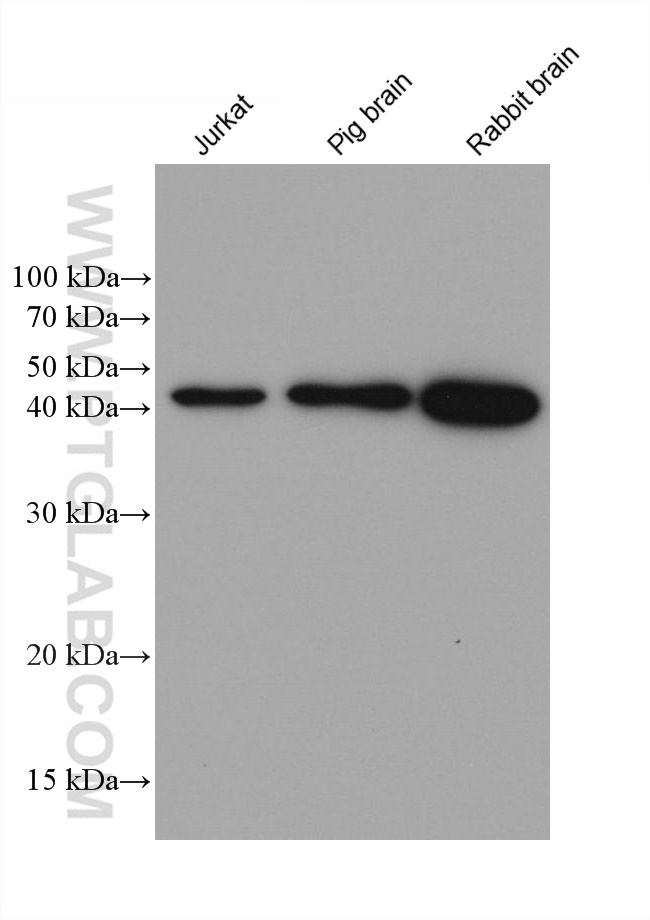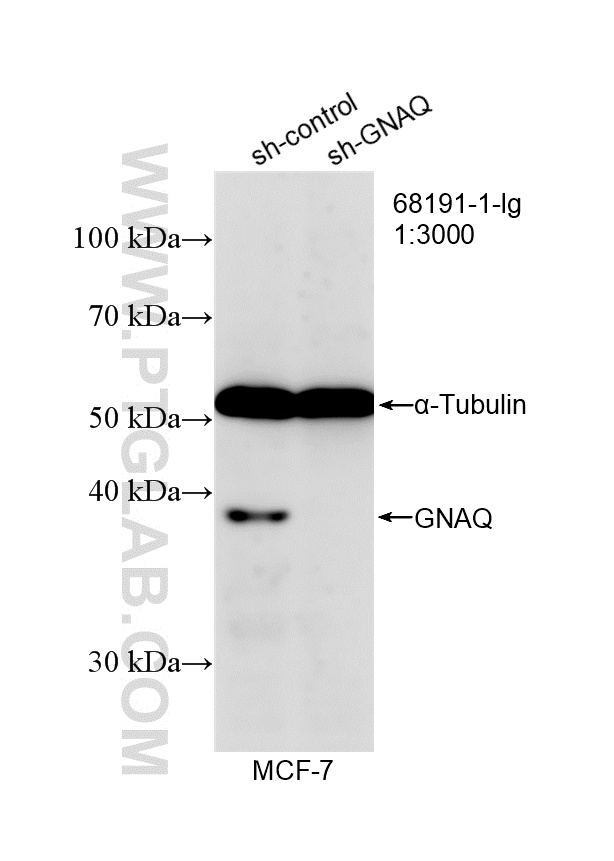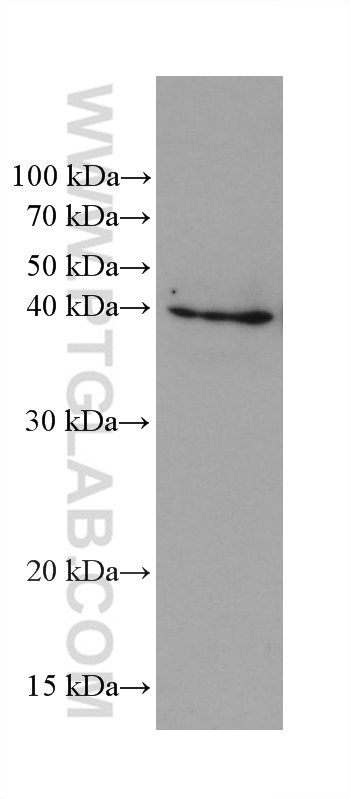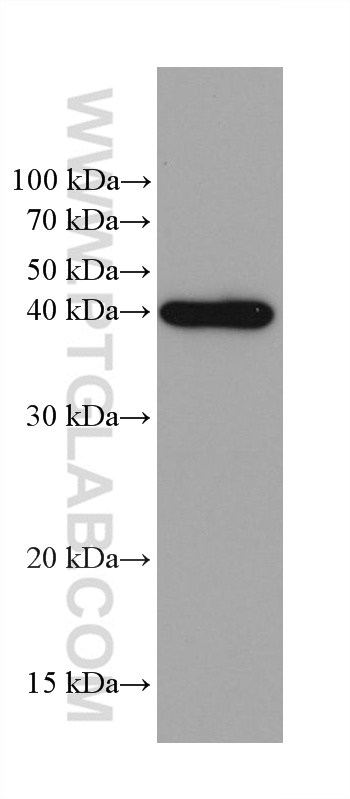验证数据展示
经过测试的应用
| Positive WB detected in | Jurkat cells, HeLa cells, rat brain tissue, pig cerebellum tissue, rat cerebellum tissue, MCF-7 cells, pig brain tissue, rabbit brain tissue, mouse brain tissue |
推荐稀释比
| 应用 | 推荐稀释比 |
|---|---|
| Western Blot (WB) | WB : 1:5000-1:50000 |
| It is recommended that this reagent should be titrated in each testing system to obtain optimal results. | |
| Sample-dependent, Check data in validation data gallery. | |
产品信息
68191-1-Ig targets GNAQ in WB, ELISA applications and shows reactivity with human, mouse, rat, pig, rabbit samples.
| 经测试应用 | WB, ELISA Application Description |
| 经测试反应性 | human, mouse, rat, pig, rabbit |
| 免疫原 |
CatNo: Ag26178 Product name: Recombinant human GNAQ protein Source: e coli.-derived, PET28a Tag: 6*His Domain: 84-205 aa of BC057777 Sequence: FTAMQAMIRAMDTLKIPYKYEHNKAHAQLVREVDVEKVSAFENPYVDAIKSLWNDPGIQECYDRRREYQLSDSTKYYLNDLDRVADPAYLPTQQDVLRVRVPTTGIIEYPFDLQSVIFRMVD 种属同源性预测 |
| 宿主/亚型 | Mouse / IgG2b |
| 抗体类别 | Monoclonal |
| 产品类型 | Antibody |
| 全称 | guanine nucleotide binding protein (G protein), q polypeptide |
| 别名 | 2H5G6, CMC1, G ALPHA q, GAQ, Guanine nucleotide-binding protein alpha-q |
| 计算分子量 | 42 kDa |
| 观测分子量 | 38-40 kDa |
| GenBank蛋白编号 | BC057777 |
| 基因名称 | GNAQ |
| Gene ID (NCBI) | 2776 |
| RRID | AB_2935280 |
| 偶联类型 | Unconjugated |
| 形式 | Liquid |
| 纯化方式 | Protein A purification |
| UNIPROT ID | P50148 |
| 储存缓冲液 | PBS with 0.02% sodium azide and 50% glycerol, pH 7.3. |
| 储存条件 | Store at -20°C. Stable for one year after shipment. Aliquoting is unnecessary for -20oC storage. |
背景介绍
GNAQ is a proto-oncogene closely related to the α subunit of guanine nucleotide-binding proteins (G proteins) that serve as key intermediates between membrane-bound G-protein-coupled receptors (GPCRs) and GPCR signalling nodes. Aberrant expression and activity of G proteins and GPCRs are frequently associated with tumorigenesis. Recent studies show that oncogenic activating mutations in GNAQ are present in 80% of the melanomas. The calculated molecular weight of GNAQ is 42 kDa. This antibody can detect a band of 38-40 kDa in SDS-PAGE. (PMID: 33993733)
实验方案
| Product Specific Protocols | |
|---|---|
| WB protocol for GNAQ antibody 68191-1-Ig | Download protocol |
| Standard Protocols | |
|---|---|
| Click here to view our Standard Protocols |







